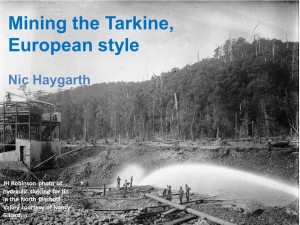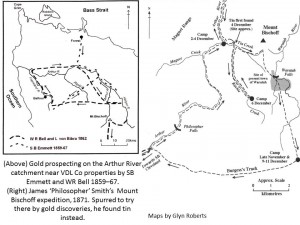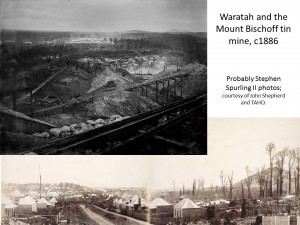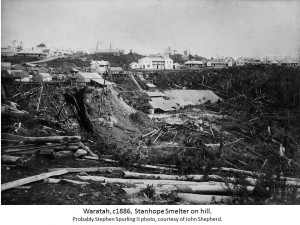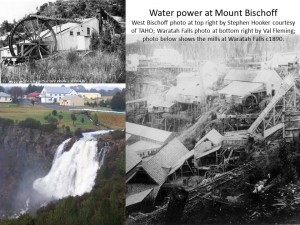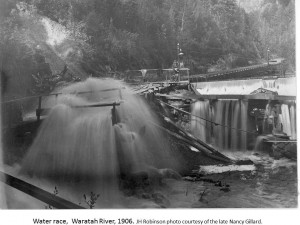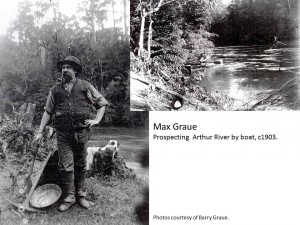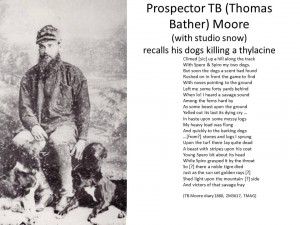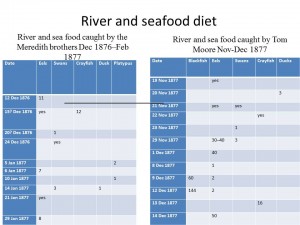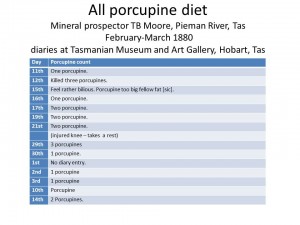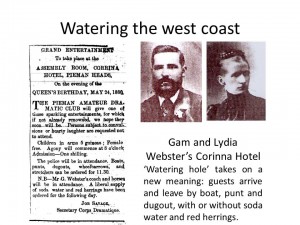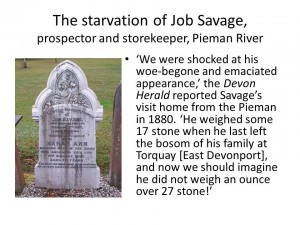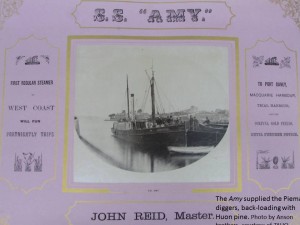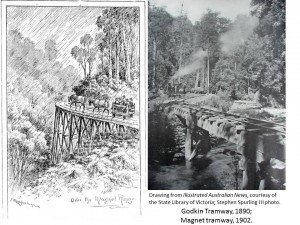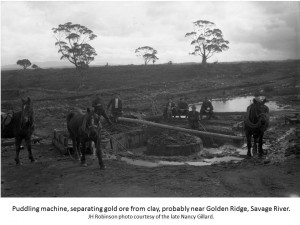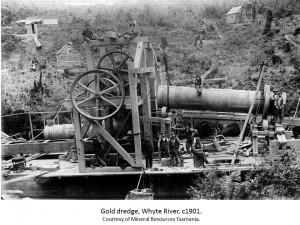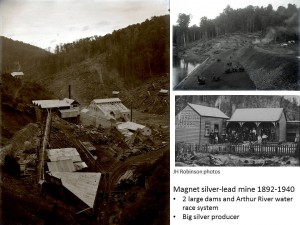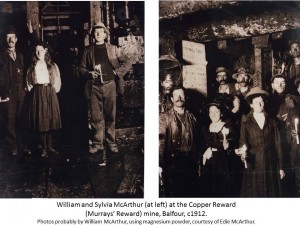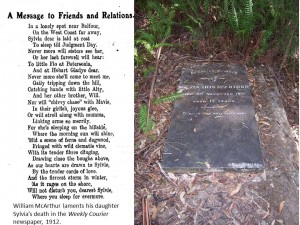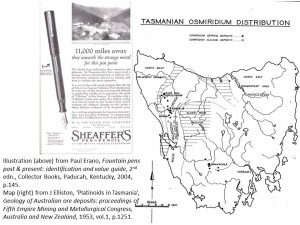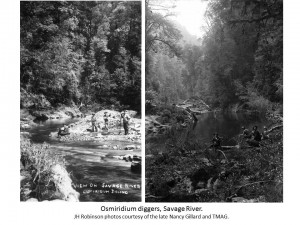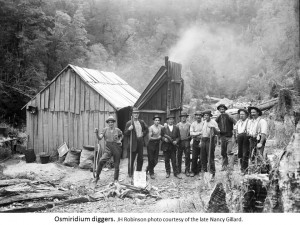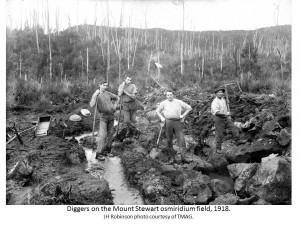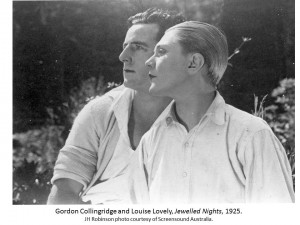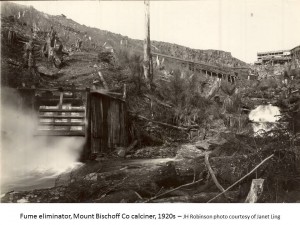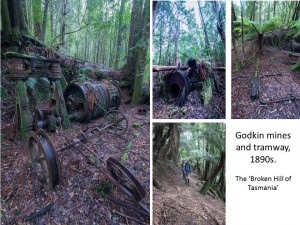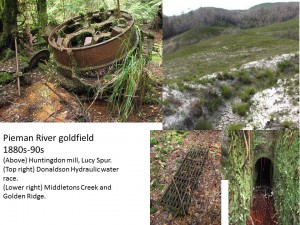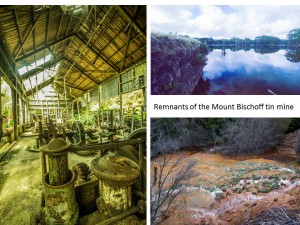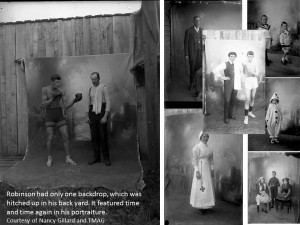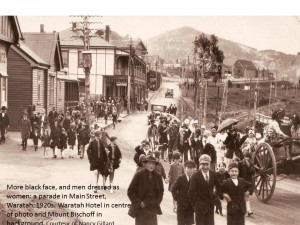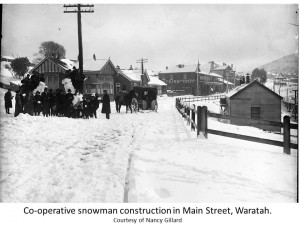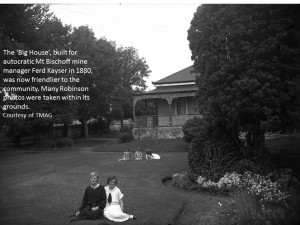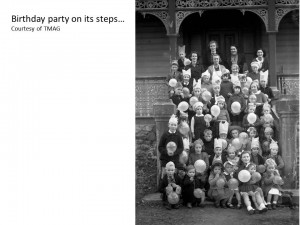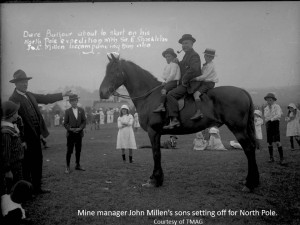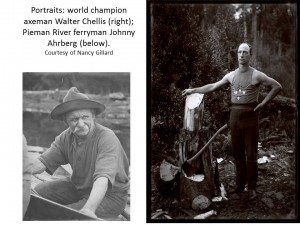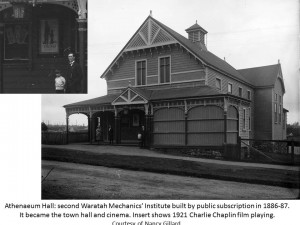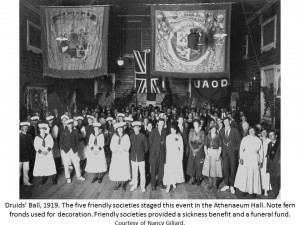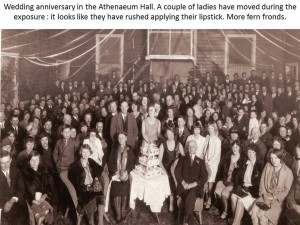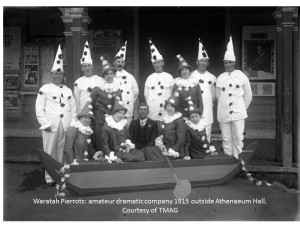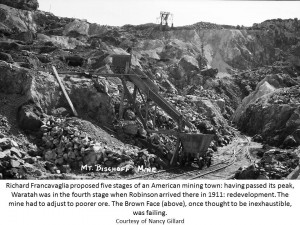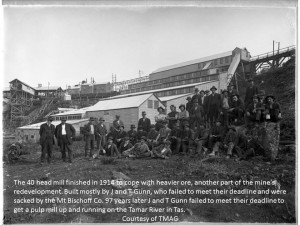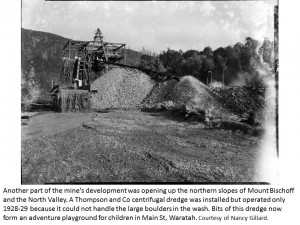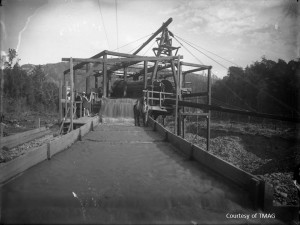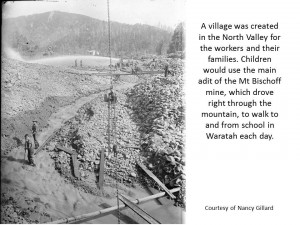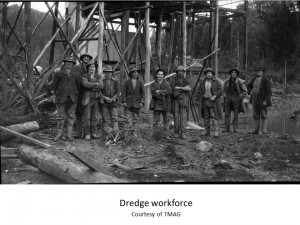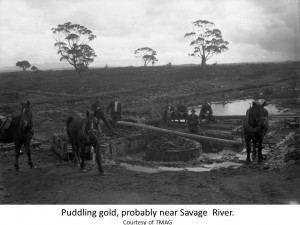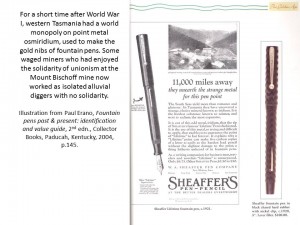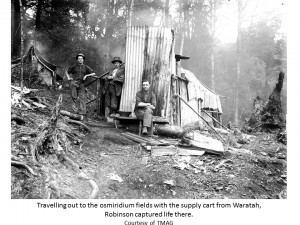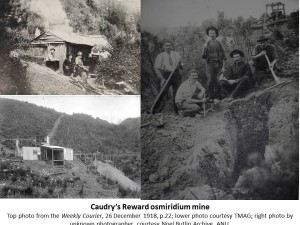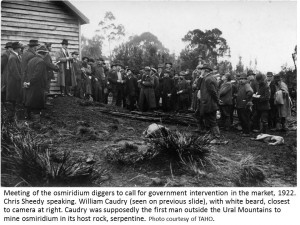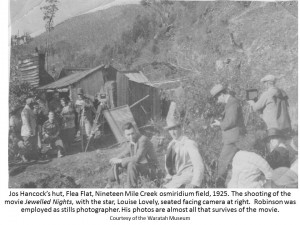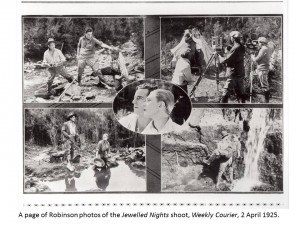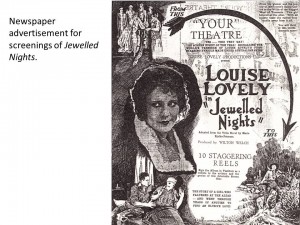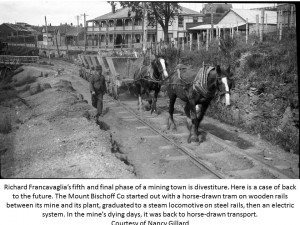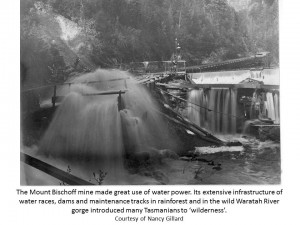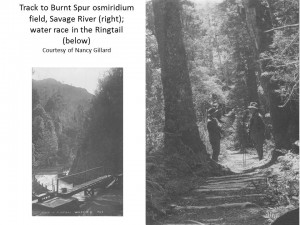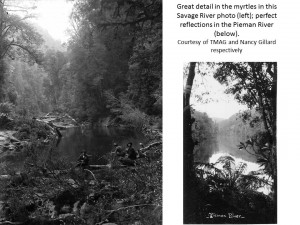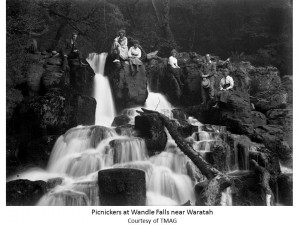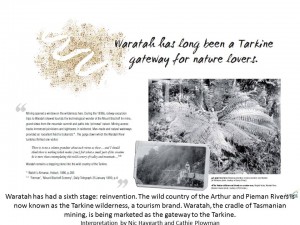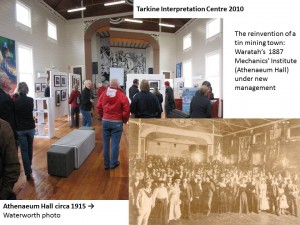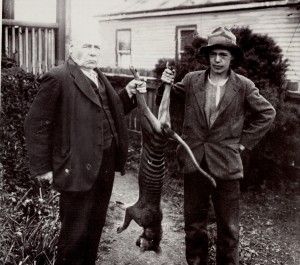
In 1924 seeing a thylacine was a rare event for most people. A few lingered in zoos. Tasmanian hunters like Luke Etchell occasionally took one in a necker snare set for wallabies, but their numbers were so few that the state government bounty scheme had long since been abandoned. The money was in living specimens. James Harrison, the Wynyard marsupial wrangler, offered a very useful £25 for a live tiger for supply to zoos.[1] When WJ Mullins captured a live mother and cubs they were such a novelty that he turned them into an exhibit doing the rounds of the agricultural shows—and Burnie’s New Year’s Day Sports, where amateur naturalist Ron Smith saw them. He recorded in a letter:
‘The young ones were nearly as big as full grown rabbits; two of them were sucking for all they were worth, and the other was asleep. The mother was about as big as an ordinary collie, but slenderer. Large brown eyes, and the face in front of the eyes narrower than a dog’s. Fur more like a possum’s than a dog’s. Altogether a very pretty animal’.[2]
On the very same day as Smith’s caged encounter, Clem Penney met a tiger family in the wild. Sixteen-year-old Penny, born and bred in Waratah, was in the North Bischoff Valley near the Arthur River when he heard a muffled bark. Turning quickly, he saw a two thylacines—a large male, and a small, young female—advancing towards him.
A few thylacines had been seen in this area over the years by miners. However, Penney’s tiger tale, told by a third party, seems somewhat exaggerated. It is unlikely that Penney, as was suggested, carried an automatic pistol simply out of fear of meeting tigers. Certainly it was normal for a man in a rural area to carry a firearm, and young Penney produced his and took a shot at the leading animal. When the pistol failed to discharge, he had time to reach for a tree limb—suggesting that the thylacine advance was far from menacing. This was a pair of animals with their young, which they were probably defending. ‘Grasping this excellent club’, Penney’s chronicler wrote,
‘he stood on guard. The female tiger was in the lead and was crawling forward. When about 6ft away she sprang full at him. He met her fairly with a sweep of his heavy club, knocking her backwards on to the ground, and followed up with a killing assault on her neck. Straightening himself instantly, the bushman found the male in the air from a mighty leap. Again the trusty club proved true, and the tiger was knocked to the ground. Gathering himself up, the animal dashed into the scrub on three legs, a foreleg being apparently broken, whimpering like a wounded dog.’[3]
How easy it was to destroy a family unit of what would be recognised belatedly as a critically endangered species.
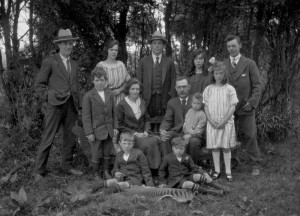
Penney returned home to Waratah with the carcass of the small female, which he displayed for the camera—probably that of the Weekly Courier’s regular contributor, JH (Jackie) Robinson. What happened to it after that? Another Robinson photo—of a Penney family group—seems to answer that question. While some thylacines skins were used as rugs, it looks like Clem Penney clubbed himself a stripy doormat.
[1] ‘Wanted’, Advocate, 19 June 1920, p. 5.
[2] Ron Smith to Gustav Weindorfer, 5 January 1924, p.132, LMSS150/1/1 (TAHO, Launceston).
[3] ‘A Waratah Resident’, ‘Fight with native tigers’, Weekly Courier, 17 January 1924, p.46.
